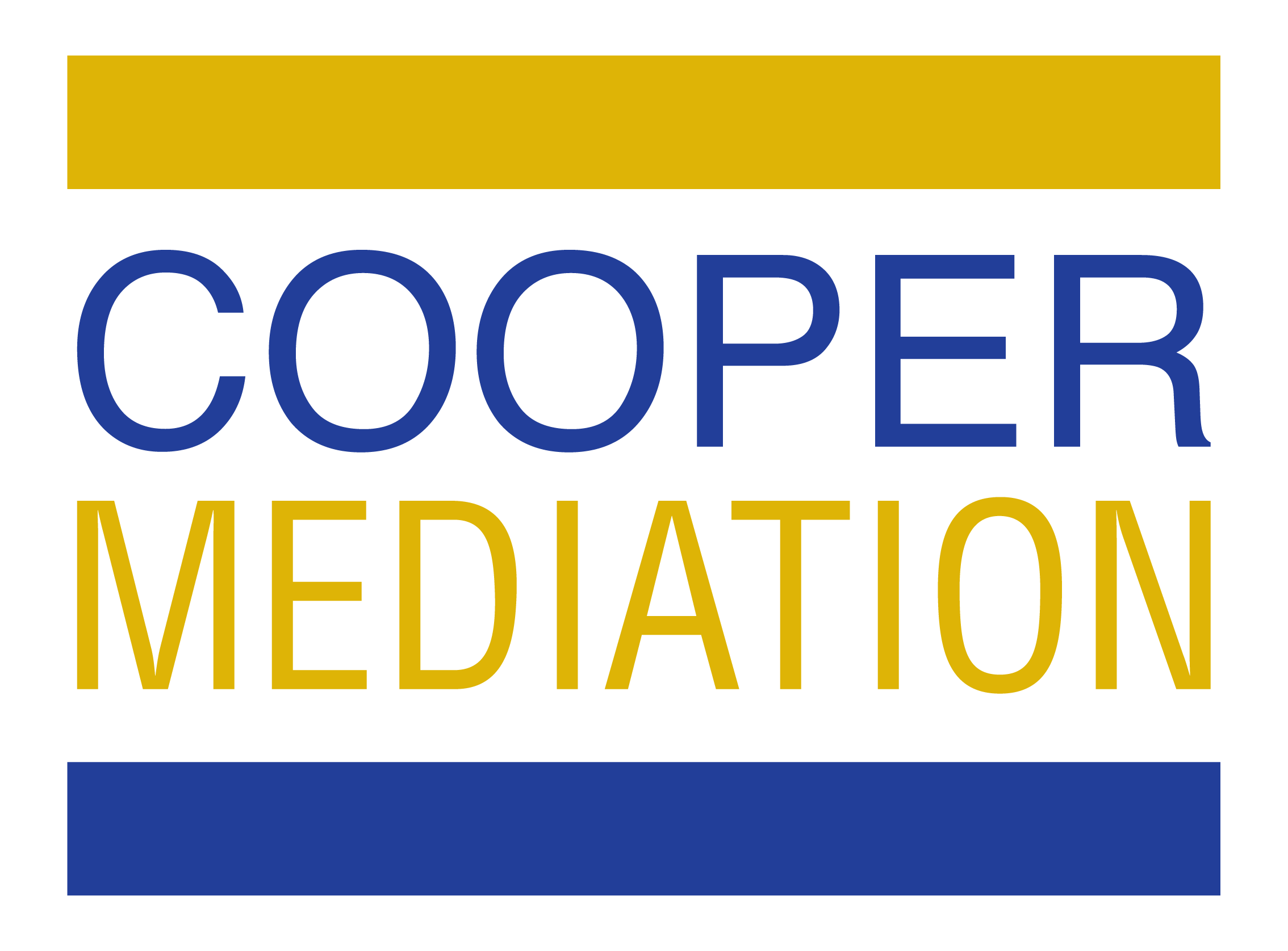
06 Mar Don’t Read This [If You’re Content With The Status Quo] – Re-Thinking Personal Injury And Insurance Mediation Processes – Abridged
Due to the popularity of my recent paper, “Don’t Read This Paper [If You’re Content With The Status Quo] – Re-Thinking Personal Injury And Insurance Mediation Processes,” I have created an abridged version to address the two problems that I frequently encounter at mediation:
1. The content and style of opening remarks in the joint plenary session
2. The positional and distributive bargaining process
These problems are the result of our longstanding traditions to mediate in the same way and our acceptance of the status quo. Instead of doing things like we have always done them, I want to explore alternatives that may offer the parties a better, less acrimonious and more productive and efficient path to resolution.
In this summary of my longer paper, I review these common mistakes and offer novel and constructive alternatives and solutions.
NOTE: The principles I discuss do not apply to mediations in which the parties are there to “tick a box,” obtain a report from the mediator and set the action down for trial.
OPENING REMARKS IN THE PLENARY SESSION
Mediation memoranda have become increasingly lengthy. Despite their comprehensive nature, counsel feel the need to repeat the content of written briefs in their opening remarks during a joint session. This is a missed opportunity. If you are not going to give the opposing party credit for reading your memorandum, why would you believe that they will listen to anything that you have to say?
If you decide to proceed with openings, I suggest that:
1. Counsel cannot repeat anything that is in their brief. They can make opening remarks based on themes of the matter.
2. Counsel can and should respond to things written in the opposing brief or things said in opening remarks by opposing counsel. If opposing counsel comments on something peripheral to the resolution of the matter, leave it alone. You can make the point with me in caucus and I will make the point on your behalf in the other room.
3. Counsel can and should make remarks that are conciliatory in nature. We are in the bridge-building business. Please offer thoughts or comments as a blueprint to help all those involved at mediation build the bridge of resolution.
Frequently, opening remarks, instead of being conciliatory, can be quite inflammatory. The plaintiff lawyer explains why they have mountains of evidence and why they will crush the defence like a bug. The defence lawyer explains why the plaintiff has no claim, no credibility and no likeability such that the claim is almost worthless. These opening remarks can go on for upwards of an hour, particularly in multi-party cases. After this hour of inflammatory comments, I frequently spend the next 30 to 60 minutes talking people in from ledges and calming them down.
I am asking people to consider the usefulness of openings. Throughout the process, I work very hard to establish trust, build confidence while gaining insights as to the dynamics present in each room. I promise that I will deliver the important information and messages in the memoranda to the opposite party in an understandable format. There is an opportunity for dialogue and discussion in caucus which is not available to counsel making opening remarks. I encourage decision makers to engage in the process. I explain the points they have made to the party opposite in interest in a digestible format.
NEGOTIATIONS AND BARGAINING
There is a tendency on the part of most plaintiff lawyers to demand the moon and the stars which is typically predicated on assumptions which are entirely favourable to the plaintiff and improbable to ever be proven at trial. There is a tendency on the part of most defence lawyers to respond with an offer that is equal and opposite in form and content (the “cold water” response).
After an exchange of insulting demands and insulting offers, I spend the next 30 – 60 minutes calming people down. How and why is this a good and productive use of our time together?
It’s a mistake for counsel not to be sensitive to how settlement demands or offers are received or considered in the opposing room.
Breaking Free From The Status Quo? A New, Better Way To Mediate
For the last number of months, I have been discouraging the parties from making offers at mediation. I am pleased to report nearly universal success in my efforts.
For my approach to be successful, the parties must have faith and trust in my commitment to confidentiality. I explain to the parties that I will push back on assumptions and approaches because my job description requires me to challenge the thinking in each room. I promise each side that I will push in an equal and opposite direction in the other room.
In my first caucus visit to each of the rooms, I will encourage the lawyer and the client to engage in a realistic discussion as to how they see the case, having regard for the current state of the evidence, anticipated future evidence and the skills and abilities of those on the other side of the case. I do not want the plaintiff’s “bottom line” and I do not want the insurance representative’s “final authority.” I want to gain an understanding as to what a realisticend-of-day settlement agreement looks like in each room and the reasons and rationale to support such a settlement agreement.
Typically, I start in the defence room(s) before visiting the plaintiff room. My rationale is that a defence offer can be deposited into the bank and spent; a plaintiff demand, whether realistic or not, requires adjudication to prove to the other side that it is an appropriate basis for resolution. Put another way, a plaintiff has rights and the defence has money. Rights can be enforced at a trial somewhere down the road. The defence money can be made available in a couple weeks.
After I have made one visit to each room, I normally need to make a second visit to each room to fine tune the analysis, views, and assessments in that room. At all times, I maintain complete confidentiality.
If the parties and their lawyers are equally candid and forthcoming with me, the settlement agreement more or less reveals itself. If the gap in positions is modest, there are many things I can do to explore how the gap can be addressed.
I do not perform magic tricks. Matters do not resolve because one side or the other gets their way. Matters are resolved because settlement demands and settlement offers are sufficiently close that the mediator can finesse the relatively small monetary gap or one side or the other can live with the amount being demanded or the amount being offered.
I have used this approach with people I met for the first time at the mediation. The techniques were still effective and the results were the same.
The Parties Must Attend Mediation With A Realistic Assessment Of Their Case
For those representing plaintiffs, the newapproach requires an ability to realistically evaluate the settlement value of a claim at the time of the mediation as well as the ability to manage the expectations of their client. If the client needs “the traditional bargaining process,” my approach is probably not appropriate. If the plaintiff and/or plaintiff lawyer are fishing for the best defence offer, without regard for the intrinsic value of the claim, this approach is probably not appropriate. Conversely, if the insurance claims professional and defence counsel (or the authority granting body) have materially different views on the value of the claim, this approach may not be appropriate.
That said, the confidential nature of this process can allow the parties gauge the appetite for settlement without potentially offending their negotiation dance partner.
Plan B – Escape Hatch – Pull The Chute
The parties are still free to negotiate in a traditional manner. The mediator can become a negotiation coach as they will have a better sense as to what may be well received in the other room. The mediator will discourage the parties from starting at extreme positions and the goal posts for settlement be established without going through multiple rounds of insulting offers.
Since candid information was shared only with the mediator in complete confidence, neither side will have been painted into a corner. If the plaintiff wants to resolve the matter for less than their original target, they are free to do so and there is no loss of face. The same is true if the defence wants to pay more than their original target.
If matters don’t settle, these offers will leave each side with an understanding of what the other is seeking and an understanding that their confidential expectations do not align with the confidential expectations of the other side.
CONCLUDING THOUGHTS
We are not limited by our prior experiences and approaches. We have an opportunity to craft a more productive, efficient and less acrimonious way to conduct mediations. Let’s seize the opportunity and make the most of it.
ABOUT THE AUTHOR
 Vance Cooper is principal of Cooper Mediation Inc. Vance devotes 100% of his professional time to mediating primarily personal injury and insurance cases. He specializes in multi-party and complex mediations.
Vance Cooper is principal of Cooper Mediation Inc. Vance devotes 100% of his professional time to mediating primarily personal injury and insurance cases. He specializes in multi-party and complex mediations.
Vance can be reached at vance@coopermediation.ca or (647) 777-4011.
To schedule a mediation with Vance, visit: https://coopermediation.ca/vances-online-calendar/.
Main Image by Freepik.
